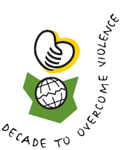Annual focus 2008: Pacific Region Profile

- Demonstration protesting violence against women in Suva. Fiji 1999, Photo © PETER WILLIAMS/WCC
Back to the main Pacific focus page
The Pacific Region (Pacific), over 20,000 islands scattered across the largest ocean (196 million square kilometres) in the world, is home to a population exceeding over 7.5 million. Although the ocean stretches from the Tropic of Cancer, crosses the Equator and south to the Tropic of Capricorn (excluding Australia), the land mass is only 10 million square kilometres. While they may share the same ocean, the Pacific is as unique as its many volcanic islands and atolls. The island region discussed here fall culturally and geographically into three main areas: Polinisia (Polynesia), Melanisia (Melanesia) and Maikoronisia (Micronesia).
Ancient customs often predominate in these islands. They were uninhabited 50,000 years ago, but gradually people began to arrive in small numbers from Asia. In the sixteenth century the first Spanish explorers began to penetrate the region with their missionaries. The western world brought dramatic transformations over the last 150 years. Changes in technology, energy, social services, education and health care have trapped most island cultures in dependence on developed nations. While people on the islands were once able to lead simple and independent lives, in the midst of the world economy they have become marginalized and poor. The one exception is the island nation of Nauru, which once had the riches source of phosphates in the world. Profits from the mining and now from offshore banking have made it by far the wealthiest in the area, at least for some of the population. However, the mining has left 80 percent of the island unusable, leading to overcrowding.
In addition to economic difficulties, violence and political instability mark several of these island nations. In Fiji there has been political turmoil between the 60 percent of the population who are Melanesian and the 40 percent who are ethnic Indian. Bougainville Island in Papua New Guinea has also been the scene of violent upheaval and is attempting to become a separate state. A coup in the Solomon Islands in 2000 has left that nation without a working government. There is also political unrest on Vanuatu. Two nations, Kanaky and Tonga, are in the midst of difficult political transitions, and French Polynesia just recently completed negotiations with its colonizing country. The United States and France continue to use some islands for military purposes. Throughout the islands, indigenous peoples find their traditional cultures, languages and human rights endangered.
These nations are prone to volcanic eruptions, earthquakes and hurricanes. Nuclear fallout from weapons testing by France in French Polynesia and the United States in the Marshall Islands has caused radiation sickness. Global warming is causing the sea level to rise, and many islands are disappearing or shrinking. Tuvalu is particularly endangered by global warming, since most of its land lies only 2 meters above sea level.
In 1879 the London Missionary Society brought Christianity to Tahiti. During the 1800s the Methodists, Presbyterians, Roman Catholics and Anglicans established churches on the larger islands. During the 1900s the Seventh-day Adventists, the Baha'i faith and the Mormons arrived. Today, Christianity is the primary faith of most of the islands. In the face of the vast distances, the isolations, and the enormous cultures and linguistic disparities of the Pacific, the Christian church has acted as a powerful centre and uniting force in the Pacific society, though it has itself been greatly hampered by its own denominational insularity. The Pacific Conference of Churches has worked to overcome this insularity through workshops, and the encouragement of Pacific-wide research and scholarship. There are also several ecumenical councils operating in the region, including the National Council of Churches in American Samoa, the Papua New Guinea Council of Churches, the Samoa Council of Churches, and the Tonga National Council of Churches. WCC member churches of the independent island nations in the Pacific region are listed below. However there are three WCC member churches on islands that are still in association with colonial powers: the Congregational Christian Church in American Samoa (US), the Cook Islands Christian Church (NZ) and the Congregational Christian Church of Niue (NZ).
More information on churches and countries in the Pacific:
Population: | 8 million |
Government: | Independent, Territories, Democratic republic, Federal republic, Republic, Constitutional monarchy, Parliamentary (democracy, republic, and monarchy). |
Language: | English, Fijian, Hindustani, French, Tahitian, Chinese, Melanesian, Uvean, Javanese, Vietnamese, Gilbertese, Marshallese, Trukese, Ponapean, Yapese, Mortlock, Kosraen, Nauruan, Palauan, Samoan, Solomon Pidgin, Tongan, Tuvaluan, Bislama and over 1,000 more languages. |
Islands: | Polenisia or Polynesian means many islands. Polynesia is the largest of the three divisions. These islands include: New Zealand; Hawaiian Islands; Rotuma; Midway Islands; Samoan Islands; Tonga; Tuvalu; Cook Islands; French Polynesia; and Easter Island. Melanesia means black islands and includes: Papua New Guinea; New Caledonia, Solomon Islands; Vanuatu and Fiji. Maikoronisia or Micronesia means small islands. Micronesian include: Guam; Wake Island; Palau; Marshall Islands; Kiribati; Nauru; Federated States of Micronesia and the Mariana Islands. |
Religion: | Christian, Hindu, Muslim, Chinese folk religion, Buddhist, Baha'i, Ethnic, and Other. |
Source: In God's Hands, Common Prayer for the World, Ed. Hugh McCullum and Terry MacArthur, WCC Publications, 2006.



